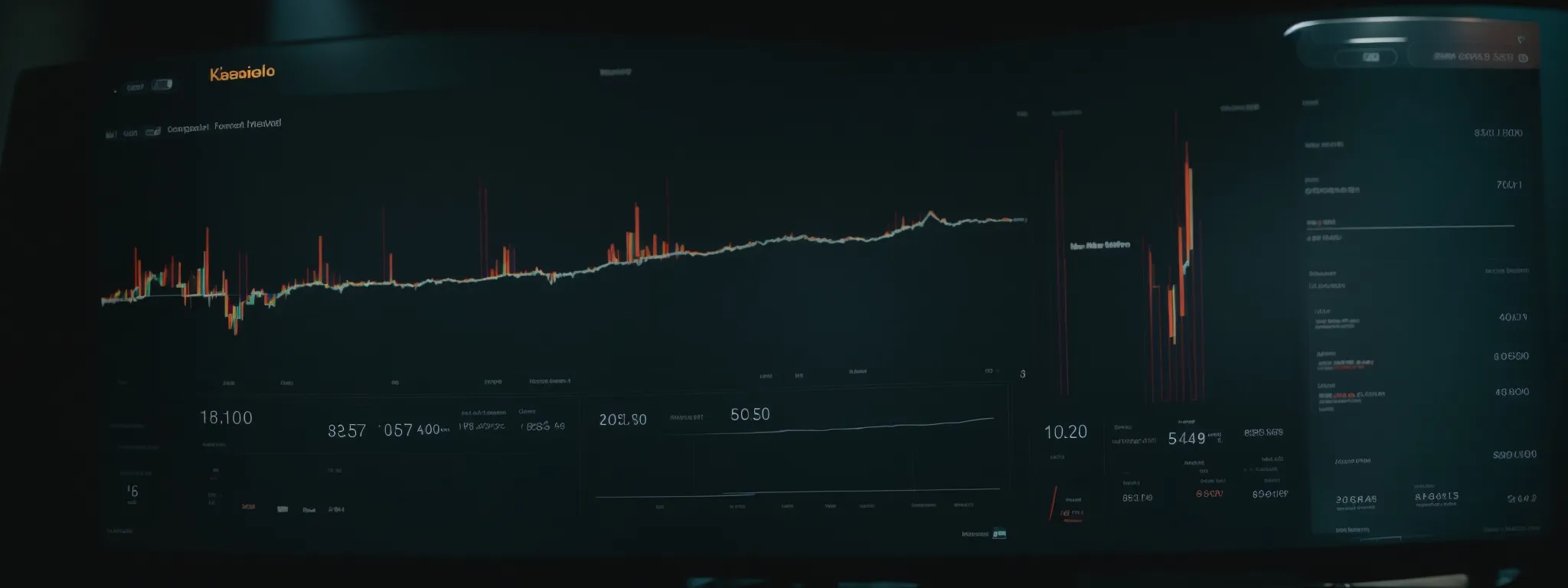Amazon SEO vs. Google SEO— The Difference
Understanding the Key Distinctions Between Amazon SEO and Google SEO Navigating the intricate landscape of search engine optimization requires an understanding that not all SEO strategies are […]
Understanding the Key Distinctions Between Amazon SEO and Google SEO
Navigating the intricate landscape of search engine optimization requires an understanding that not all SEO strategies are created equal, particularly when comparing Amazon SEO to Google SEO.
These distinct digital marketing pathways diverge significantly in their core focus; while Amazon SEO zeroes in on maximizing sales volume through product search visibility, Google SEO enhances a brand’s overall online presence and drives traffic across various web pages.
Executing the appropriate seo strategy entails a comprehensive grasp of each platform’s unique ranking algorithm, be it Amazon’s A9 algorithm or the complex system employed by Google.
The nuanced differences between them can be the determining factor in a campaign’s success.
Keep reading to unlock the tactics that can propel a product listing to the pinnacle of a search engine results page or elevate a company’s brand on the wider web stage.
Key Takeaways
- Amazon SEO Is Driven by Conversion Optimization, Specifically Tailoring Product Listings for the A9 Algorithm to Enhance Visibility and Sales
- Google SEO Focuses on Broad Content Strategies to Meet Diverse Informational Needs and Improve Relevance Across a Wide Audience
- External Links Have Minimal Impact in Amazon’s Ranking System, While They Significantly Boost Authority and Search Rank in Google SEO
- Effective Amazon SEO Leverages Backend Keywords and Optimized Product Elements, Whereas Google SEO Requires Quality, Context-Rich Content
- Performance Metrics Differ Between Platforms, With Amazon Providing Seller-Specific Data and Google Offering Comprehensive User Behavior Analytics
Diving Into the Basics of Amazon SEO and Google SEO

Embarking on the digital marketing journey necessitates a clear-cut understanding of the vastly different terrains that are Amazon SEO and Google SEO.
It’s critical to grasp that optimizing for a retail-centric environment such as Amazon must focus on conversion-driven strategies that boost visibility among ready-to-purchase consumers.
On the other hand, Google, being the behemoth of information retrieval, demands a broader approach, ensuring an organization’s content resonates powerfully across the diverse web user landscape.
These twin pillars of SEO work in tandem, yet they each command unique patterns of search terms, keyword research methodologies, and ranking algorithms critical to maximizing a company’s online presence.
Defining Amazon SEO: Tailoring for E-Commerce Success
In the e-commerce realm, Amazon SEO becomes a pivotal element for sellers aiming to navigate the competitive marketplace effectively. It’s a specialized subset of SEO that hones in on optimizing product listings to rank higher on Amazon’s product search engine, capturing consumers at the pinnacle of their purchase intent.
This optimization process entails a meticulous focus on product titles, descriptions, backend keywords, and a blend of factors guided by Amazon’s A9 algorithm. Ensuring a product page is fine-tuned for this algorithm augments the likelihood of appearing before a buyer with intent, improving overall product visibility and potentially driving sales volume.
| SEO Aspect | Amazon SEO | Google SEO |
|---|---|---|
| Primary Aim | Conversion optimization | Information relevance |
| Target User | Shopper | Web user |
| Keyword Focus | Product-centric phrases | Broad keyword relevance |
| Algorithm | A9 ranking algorithm | Google’s dynamic algorithms |
Unraveling Google SEO: Dominating the World Wide Web
Google SEO stands as the archetype for broadening a brand’s digital foothold, emphasizing relevance, and providing value to a diverse online audience. Unlike its e-commerce counterpart, Google SEO prioritizes comprehensive content strategies that cater to informational queries, often encompassing an extensive array of search terms and user intents. A refined Google SEO strategy propels web pages to the upper echelons of the search engine results page (SERP), fostering trust and authority in a brand’s niche.
To navigate through Google’s intricate algorithms, companies like LinkGraph deploy a sophisticated blend of keyword research, high-quality backlink profiles, and user-friendly site architectures. Their Focused Approach ensures that a web page not only garners high search rank but also resonates with readers, enhancing engagement metrics like time on page and conversion rates. Success in this arena means mastering the art of aligning one’s SEO work with evaluating and fulfilling the complex needs of a web user.
Varying Goals of Amazon and Google SEO Strategies

In the realm of digital marketing, the objectives guiding Amazon SEO and Google SEO are distinctly tailored to their respective environments.
For sellers on the world’s largest online marketplace, mastering Amazon SEO is about fine-tuning product listings to convert shoppers into buyers, employing strategic product search methodologies that leverage the A9 algorithm.
Meanwhile, Google SEO targets a broad spectrum of information seekers, by developing content that provides answers and valuable insights across a variety of queries.
These divergent paths reflect the core intent of each platform: one focuses on facilitating the immediate purchase journey, while the other nurtures the discovery process that encompasses every facet of a web user’s experience.
Amazon SEO Focuses on Direct Sales Conversion
Delving into the domain of Amazon SEO, the spotlight shines on the efficacy of direct sales conversion. Sellers orchestrate their digital storefronts with an acute awareness that the consumer has navigated to Amazon with a purchase already in mind: their products must be discoverable and appealing at the crucial moment of decision.
Amazon SEO meticulously optimizes each product listing to stand out in the A9 algorithm-driven marketplace. Through well-crafted product titles, descriptive bullet points, and strategic backend keywords, sellers enhance their product’s visibility, directly influencing the shopper’s journey from browsing to buying.
| Amazon SEO Goal | Strategy Components |
|---|---|
| Visibility Increase | Optimized product titles, bullet points |
| Conversion Rate Boost | Strategic backend keywords, engaging product descriptions |
Google SEO Emphasizes Broad Information Discovery
Google SEO transcends mere product discovery, ushering users into a world of diverse information and resources. Through meticulous optimization, a web page is transformed into a repository of knowledge, carefully designed to satisfy the intellectual pursuits of any curious visitor.
In this broader landscape, the value of search engine optimization lies in creating touchpoints that users recognize as wellsprings of reliable data. LinkGraph’s SEO Services Embody This Goal, consistently ensuring that client content ranks favorably in the ever-evolving search landscape, facilitating an enduring connection with the target audience.
Keyword Relevance and Optimization Techniques Compared

The digital terrain of search engine optimization demands distinct navigational strategies when comparing the Amazon marketplace to Google’s vast search network.
Within this competitive sphere, the application of keywords serves as a compass, guiding consumers in Amazon towards the products they seek and facilitating information discovery on Google.
This subsection delves into the specialized approach to keywords integral to Amazon’s search landscape and the sophisticated interplay between search queries and Google’s algorithms.
The subsequent analysis will shed light on the tailored keyword relevance and optimization techniques deployed within each search engine’s framework to align with the specific user journey and intent.
The Unique Approach to Keywords on Amazon
Amazon’s approach to keywords is a meticulous science, tailored to capture the attention of potential buyers amid a vast sea of product options. Sellers must strategically utilize keyword phrases that align with the search terms entering the minds of consumers who are often at the final stage of the buying cycle.
Optimization on Amazon not only revolves around the visible elements like product titles and bullet points but also involves a keen understanding of backend keywords, which play a vital role in how the A9 algorithm determines product relevancy and rank in search results. Sellers must navigate this internal search landscape with precision to connect with their intended audience effectively.
How Google’s Complex Algorithms Interpret Keywords
In the intricate realm of Google SEO, algorithms like RankBrain and BERT scrutinize the context of a query, assessing the complexity and nuance of language to direct users to the most relevant content. By analyzing the searcher’s intent and the semantic meaning of keyword phrases, Google ensures that its SERP aligns closely with what the user is truly seeking.
LinkGraph’s SEO strategy capitalizes on these intelligent algorithms, optimizing clients’ content to be both rich in relevant keywords and contextually appropriate. Their approach creates a synergy between user queries and web content, elevating the chances for web pages to climb to the top of Google’s SERPs, thus reaching a broader audience more effectively.
The Role of External Links in Amazon SEO vs. Google SEO

Navigating the intricate landscapes of Amazon and Google SEO entails grasping the significance of elements like external links, a contrast that underscores the divergent SEO tactics required by each platform.
While external linking plays a relatively peripheral role in Amazon’s ecosystem, dominated by internal metrics and direct consumer interactions, this aspect takes center stage within Google’s complex algorithmic construct.
In the subsequent sections, readers will gain insights into Amazon’s subtle regard for external links compared to the profound impact these connections have on Google SEO strategies, shaping the very infrastructure of search-related visibility and authority.
Understanding Amazon’s Indifference to External Linking
In the focused ecosystem of Amazon SEO, the weight given to external links diverge markedly from Google’s algorithms. The A9 algorithm prioritizes factors like product relevancy over signals from external websites, charting a course where the quality of the product listing itself holds sway over outside endorsements.
LinkGraph’s expert grasp of Amazon’s SEO subtleties underscores their awareness that, for sellers, the power to influence product rank primarily lies within the meticulous optimization of on-page elements such as images, bullet points, and customer reviews.
| SEO Factor | Amazon SEO Response | Google SEO Response |
|---|---|---|
| External Links | Minimal influence on ranking | Significant influence on authority and rank |
| On-Page Elements | Highly weighted, such as product images, bullet points | Important for user experience and relevance |
| Customer Interactions | Strong influence through reviews and Q&A | Indirect impact via user engagement metrics |
Why External Links Are a Cornerstone of Google SEO
External links are the linchpin of Google SEO, acting as critical endorsements that signify a page’s worthiness and relevance to a topic. LinkGraph, understanding the immense value of such backlink profiles, Tailors Its SEO Strategies to acquire high-quality links, which serve as a signal to Google’s algorithms that the content is authoritative and valuable for users.
In the algorithmic eyes of Google, each external link to a site functions as a vote of confidence, strengthening its credibility and bolstering its position in the search results. LinkGraph’s Expertise Leverages This Fundamental SEO principle, enhancing their clients’ online presence through strategic link-building campaigns that adhere to Google’s best practices and result in measurable improvements in search rank.
On-Page Optimization: Amazon’s Product Listings vs. Google’s Content

In the dynamic world of search engine optimization, the art of on-page optimization remains a fundamental aspect, albeit distinctly applied across platforms such as Amazon and Google.
Each requires a deft touch—a mastery of techniques that align with the nuances of either Amazon’s product-driven landscape or Google’s vast content ecosystem.
The focus for Amazon is crafting product pages that immediately captivate and convert shoppers, while Google’s sophisticated algorithms demand diverse, high-quality content that transcends mere product listings.
This intricate divergence underscores the importance for sellers and content creators alike to tailor their on-page optimization practices to the medium’s specific requisites for achieving unparalleled online visibility and engagement.
Crafting Winning Product Pages for Amazon Search
In the competitive sphere of Amazon’s product search engine, crafting winning product pages demands an acute understanding of consumer behavior and the A9 algorithm. Ensuring each product listing is meticulously optimized, from its compelling product title to its crisp, benefit-focused bullet points, is paramount for sellers who wish to thrive in Amazon’s marketplace.
Excellence in Amazon SEO requires not just accurate and keyword-rich product descriptions, but also an insightful use of backend keywords that resonate with the search phrase patterns of the target buyer. LinkGraph’s SEO services excel in fine-tuning these elements, thereby elevating the product’s visibility and bolstering its potential to outshine competitors in a crowded online space.
Google Optimizes for Diverse Content Beyond Products
Google SEO reaches a broader content spectrum, catering to various informational needs and not confined strictly to product-oriented searches. LinkGraph’s expertise ensures web pages offer a wealth of resources, insights, and answers, effectively satisfying the searcher’s intent, whether they seek guidance, analysis, or educational material.
Strategic content optimization underpins LinkGraph’s SEO services, where the focus extends to creating resonant narratives and compelling value propositions that engage a diverse audience. This adaptability allows businesses and content creators to forge stronger connections with visitors, enhancing the user experience and authority within their respective fields.
Measuring SEO Performance: Amazon Insights vs. Google Analytics

Success in search engine optimization hinges on the ability to interpret and act upon performance metrics.
An essential distinction between Amazon SEO and Google SEO is the analytics framework each employs to convey vital insights.
Sellers on Amazon have access to an array of seller metrics that inform improvements and drive SEO campaigns, whereas on Google, analytics tools offer a panoramic view of user interactions with content across the web.
This subsection will explore the intricacies of leveraging Amazon’s focused insights to excel within its marketplace and the comprehensive capabilities of Google Analytics in decoding SEO data to inform broader digital strategies.
Leveraging Amazon’s Seller Metrics for SEO Success
Sellers harness Amazon’s seller metrics to refine their SEO tactics and elevate their marketplace influence. With an emphasis on data such as sales volume, conversion rates, and search rank, these metrics allow sellers to pinpoint exactly how a buyer interacts with product listings, enabling informed decisions to optimize search visibility within the Amazon landscape.
LinkGraph, utilizing these seller-centric insights, empowers clients by dissecting performance data to evolve SEO strategies that resonate with Amazon’s search algorithm, ultimately driving product rank and fostering sustainable growth. Mastery of these metrics equates to an enhanced ability to adjust SEO efforts pragmatically, ensuring that every tweak aligns with consumer behavior and marketplace trends.
Decoding SEO Data With Google Analytics Tools
Google Analytics serves as a cornerstone for understanding and honing Google SEO strategies, providing a deep dive into user behavior and interaction with web content. It’s a comprehensive suite that reveals trends in web user acquisition, behavior, and conversion, facilitating data-driven decisions for optimizing SEO work.
LinkGraph harnesses the robust capabilities of Google Analytics to parse through vast amounts of data, identifying the pathways that lead to increased engagement and improved search engine rankings. Their adept interpretation of these analytics allows for the fine-tuning of a brand’s SEO campaign, ensuring alignment with evolving consumer patterns and the intricate nuances of Google’s search algorithms.
Conclusion
In conclusion, grasping the key distinctions between Amazon SEO and Google SEO is vital for tailor-making successful digital marketing strategies across different online platforms.
For Amazon, focusing on conversion optimization through product-centric keywords and on-page elements aligns with the A9 algorithm, increasing the chances of catching the attention of ready-to-buy shoppers.
Whereas, Google SEO thrives on broad keyword relevance and high-quality backlinks, aiming to provide value and relevance across a variety of user queries while leveraging sophisticated algorithms to rank diverse web content.
Recognize the unique patterns of search terms, optimization techniques, and external link significances in each realm to maximize a brand’s visibility and ensure the right approach is applied in the appropriate platform.
Understanding these differences allows marketers to craft targeted campaigns which not only improve search visibility but ultimately drive conversions and engagement where it matters most.















































































